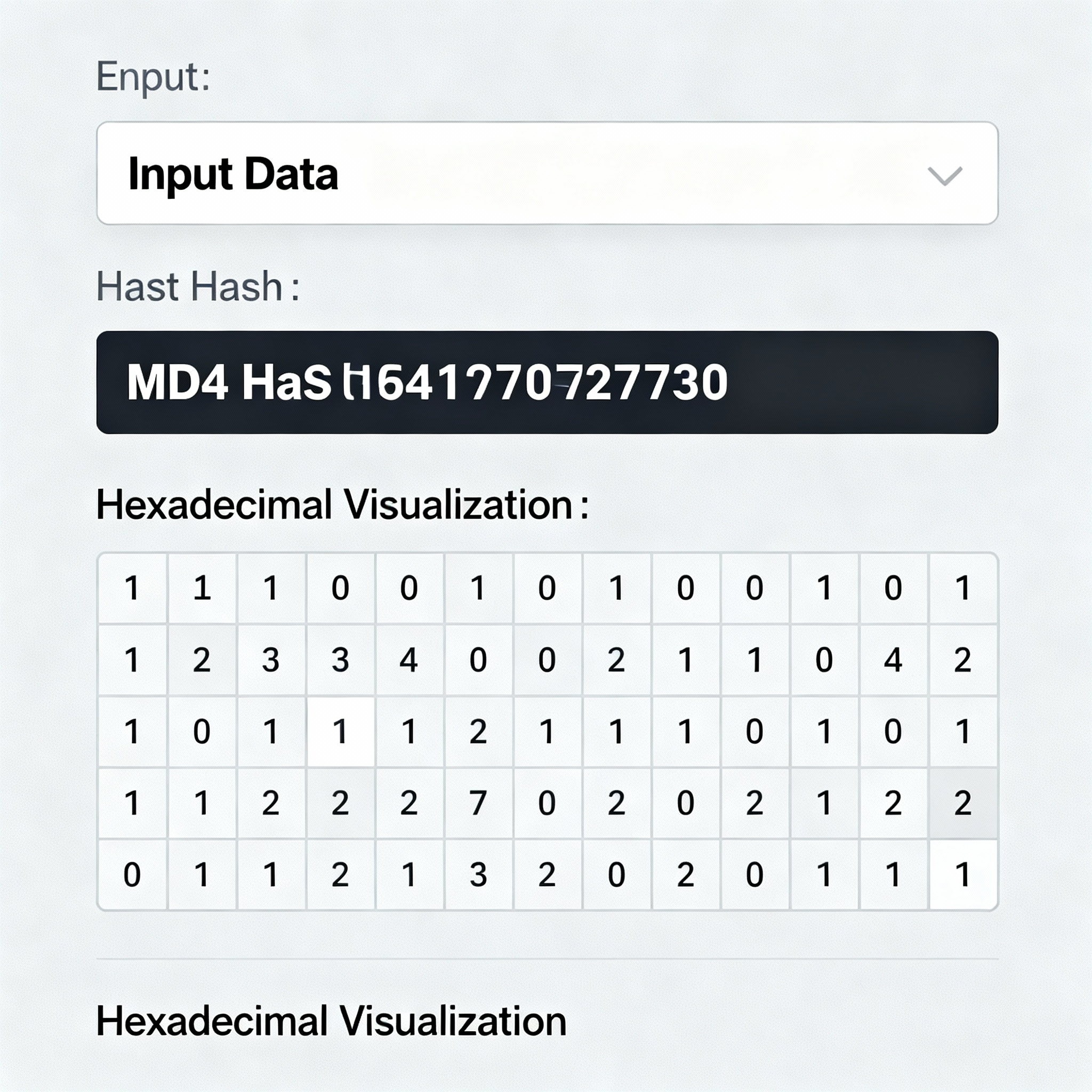
MD4 generator
Created on 23 October, 2025 • Generator tools • 35 views • 2 minutes read
Hash algorithms are essential for securing and verifying data in digital systems. The MD4 generator stands out as a classic tool for
MD4 Generator: Simplifying Hash Creation for Data Integrity
Hash algorithms are essential for securing and verifying data in digital systems. The MD4 generator stands out as a classic tool for producing cryptographic hashes. While new and more resilient algorithms have taken precedence, MD4 remains relevant for compatibility in specific legacy applications and educational exploration.
What is an MD4 Generator?
An MD4 generator is a utility—software or online service—that converts any piece of data (text, passwords, files) into a 128-bit hash value, rendered as a 32-hexadecimal character string. Developed by Ronald Rivest in 1990, MD4 (Message Digest 4) was designed to be speedy and efficient. The process takes input, applies mathematical permutations and bitwise operations, and quickly produces a unique fingerprint for the data.
Hash functions like MD4 ensure that even the smallest change in the input yields a dramatically different output. This non-reversibility and sensitivity make MD4 popular for early password storage, checksums, and data verification workflows—especially in legacy database and authentication systems.
How Does an MD4 Generator Work?
Hashing with an MD4 generator involves several steps:
- The data is divided into 512-bit blocks.
- Message padding ensures blocks are fully filled.
- Each block is processed through three rounds of bitwise logical operations, left rotations, and modular additions.
- The algorithm produces a 128-bit digest, usually shown as a hexadecimal string.
The strength of MD4, like other hashes, lies in its speed and ability to transform variable-length input into fixed-length output quickly. Importantly, MD4 hash results cannot be reversed to recover the original data—making it useful for storing passwords and verifying file integrity, but not for content encryption.
Applications and Limitations of MD4 Generator
Legacy and Compatibility Use
While superseded in security by newer algorithms, MD4 is still used to ensure compatibility in legacy systems, old network protocols, and some file verification scenarios. Tools supporting MD4 are essential for businesses maintaining aging infrastructure or dealing with historical databases.
Modern Security Limitations
MD4 once set the standard for cryptographic speed and efficiency. However, advances in cryptanalysis revealed vulnerabilities, making MD4 unsuitable for modern critical applications. Hash collisions and weaknesses in its structure led most organizations to shift to more secure algorithms like SHA-2 and SHA-3.
Features of an MD4 Generator Tool
- Quick Input-to-Hash: Instantly converts entered text or files to hash output.
- Simple Interface: Paste, click, and get accurate results.
- Batch Hashing: Process multiple items at once for auditing or verification.
- Open Source Libraries: Available in popular programming languages for integration with business systems.
Best Practices for MD4 Generator Usage
- Employ MD4 only for legacy support or academic purposes, not for sensitive new data.
- Validate tools and libraries for authenticity and updates.
- For secure applications, prefer SHA-256 or higher to meet current standards.
- Document hash usage clearly when maintaining systems, ensuring future migration to stronger algorithms.
The MD4 generator is a pivotal tool for data integrity in legacy contexts. As digital security standards evolve, understanding and responsibly using MD4 prepares organizations and individuals for smart data management and seamless upgrades when necessary.
Popular posts
-
GIF to BMPImage Manipulation tools • 353 views
-
GIF to WEBPImage Manipulation tools • 256 views
-
GIF-to-PNGImage Manipulation tools • 190 views
-
SHA-3/512 generatorConverter tools • 152 views
-
GIF to JPGImage Manipulation tools • 122 views